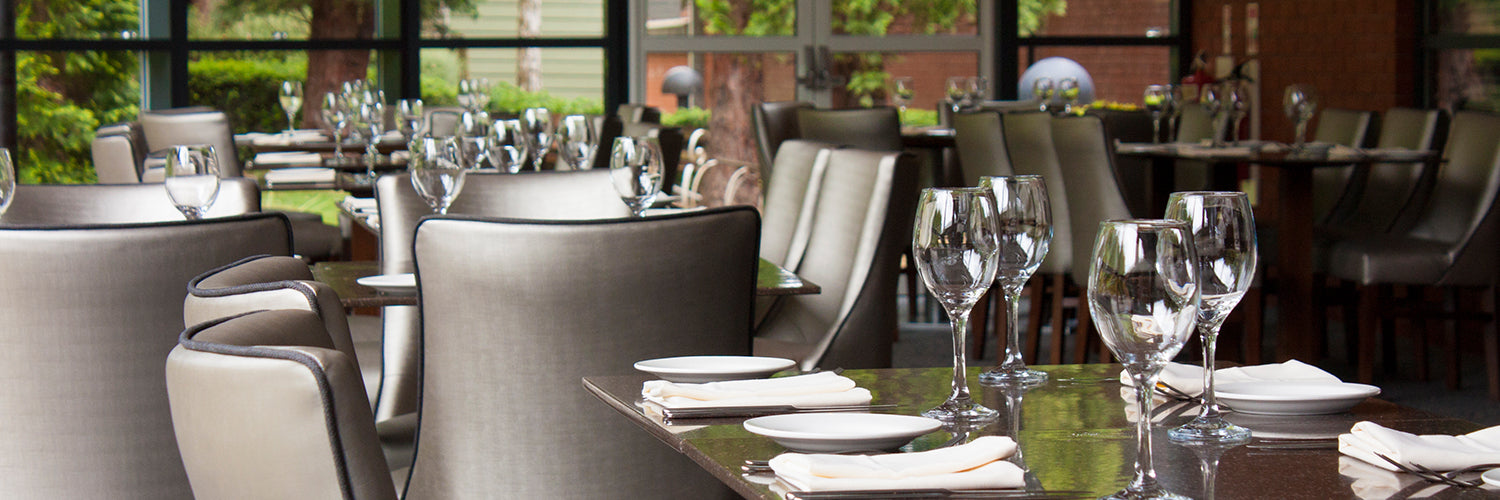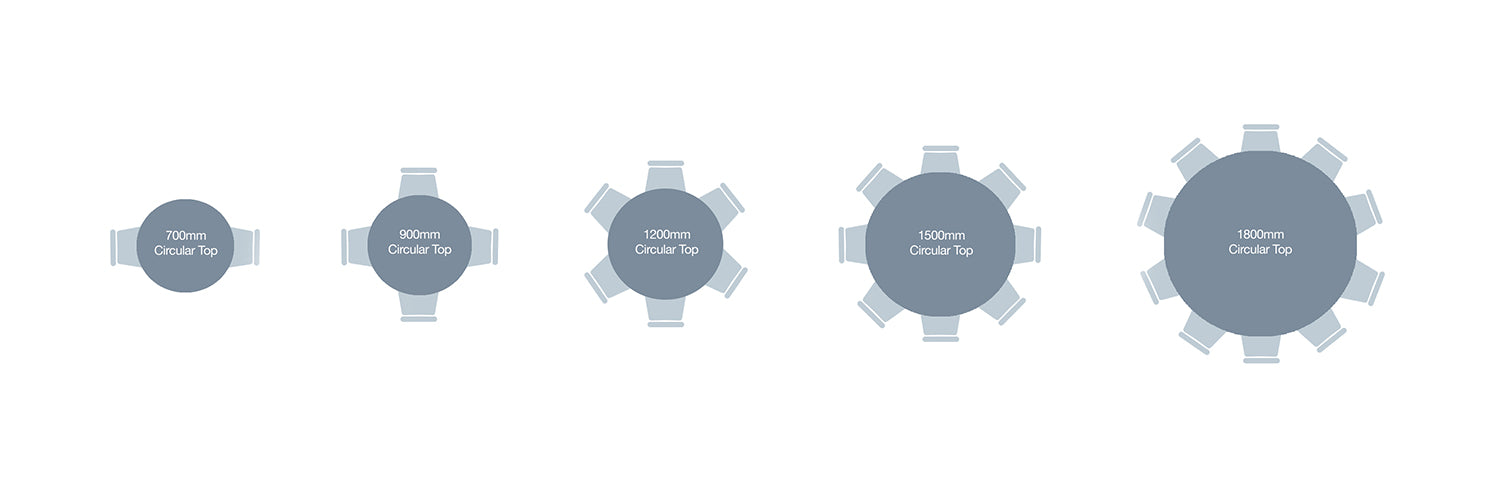Total: £0.00

Handy Restaurant Table Size Guide
Ensuring your restaurant table dimensions are correct for your space can have a huge impact on the functionality of your restaurant. Hospitality table tops are available in a wide variety of shapes and sizes. It’s important to consider how many covers are required and what the table is being used for, in order to know what restaurant table size you may require.
Our restaurant table size guide provides information on table top sizes and styles to ensure you choose the right dimensions, thickness and edging options in order to maximise on the number of covers within your restaurant or bar area.
Take a Seat: Table Size Guide
In the hospitality industry, a table top cover is a term used to describe how many guests a restaurant dining room will seat. The number of guests dining are referred to as so many ‘covers.’

Dimensions: The Correct Restaurant Table Sizes
To determine how many covers will fit in a restaurant, understanding the restaurant table dimensions is essential, luckily our table size guide is here to ensure you make the right choices.
For example, for ten covers, a circular table top should be at least 1800mm in diameter and a rectangular top would need to be a diameter of 1300mm x 750mm to seat guests comfortably. The size of a table in a restaurant is also dependent on the service you are planning to provide – drinking tables require 20% less space than quick meals, while fine dining requires significantly more for extra cutlery and tableware. Using smaller square tables and arranging them at a 45-degree angle is a useful tip to increase the number of covers in your hospitality setting.
You also need to take into consideration the restaurant table spacing, as well as the restaurant table height. This is vital when planning how many covers are needed, as you will need to consider that restaurant dining chairs will extend these dimensions around 450mm from the table, and another 450mm between the backs of dining chairs to allow enough room for the circulation of waiting staff. For specific restaurant table size dimensions, download our handy table top size guide.

Image source: The Metric Handbook
Restaurant Table Size Guide: Which Shape Fits Best?
Square tables with straight cut or undercut chamfer table edges are popular within the hospitality industry. This is because they can either be used alone or adjoined to sit flush side by side when reconfiguring the dining space to extend the number of covers around one table.
Bullnose or chamfered edges work best on tables which will not be used for maximising covers and are stand-alone round tables for smaller groups of diners. Most hotel restaurants use a combination of shapes and sizes to create interest within their design scheme and to make the layout less uniform, which also gives different options for when reconfiguring the space.
Table Bases: Restaurant Table Height Standards
It’s easy to concentrate on the visuals when considering restaurant table spacing and general layout, however it’s equally-as important to consider what goes on underneath. Table bases will vary depending on the tabletop shape you choose, as they can affect the amount of space available underneath the table for your guests’ legs. The overall comfort of your guests will have an impact on their dining experience, so it’s important to consider the following to ensure you maximise space and comfort.
Make sure that there are no table legs obstructing your guests’ seating position, and also allow for chairs to be pushed fully under the table (this can also be obstructed by the height of the arms on your restaurant chair). The ratio between the size of the tabletop and the base is important for the stability of your restaurant table, this also will help when staff are manoeuvring the tables to allow for different layouts. The thickness, height and edging options also need to be considered.
The most popular bases specified within the hospitality industry are single or twin pedestal bases because of the following reasons:
- Available in a wide range of finishes, styles and sizes
- Do not obstruct diners leg space like conventional table legs and are unobtrusive
- Will work in numerous configurations
- Good value
- Durable and less likely to weaken like a 4 legged table when being dragged

A Tall Order: Restaurant Table Height
While there are many different restaurant table height options available, there are also standard sizes that are used in hospitality environments. One of the most important considerations when choosing the appropriate table height for your hospitality, furniture is allowing enough space for guests to sit comfortably and without restriction. Ensuring that restaurant chairs can fit easily under table tops may seem an obvious point, but people will feel more relaxed while dining if they are able to cross their legs without feeling constrained.
- Poseur tables – for a comfortable seating experience, poseur tables should be around 1100mm in height. This is to accommodate bar stools which are typically taller in design.
- Restaurant tables – the ideal restaurant table height is 720mm. It’s important to ensure that aren’t too high (sometimes caused by a thick table top on a standard base), as this can create too much space between the chair and the table, resulting in an uncomfortable dining experience
- Bar tables/side tables –are a good option for placing in a bar or restaurant waiting area and should be around 600mm in size (the ideal height to perch a late night drink).
- Coffee tables – coffee tables are rarely used to eat at, which is why their typical height is around 450mm. But they are occasionally positioned in front of lounge chairs if serving afternoon tea or snacks.
Food for Thought
Following this restaurant table size guide will ensure that your restaurant or bar accommodates the maximum covers, without having an over-crowded room. A well-designed dining room can decrease wait time for guests, with traffic flow being a crucial consideration. A restaurant dining room with too much traffic will increase noise and accidents, whilst also decreasing overall turnover.
Get in Touch
If you would like to find out more about our custom or bespoke hospitality furniture options, get in touch with our customer services team today.
